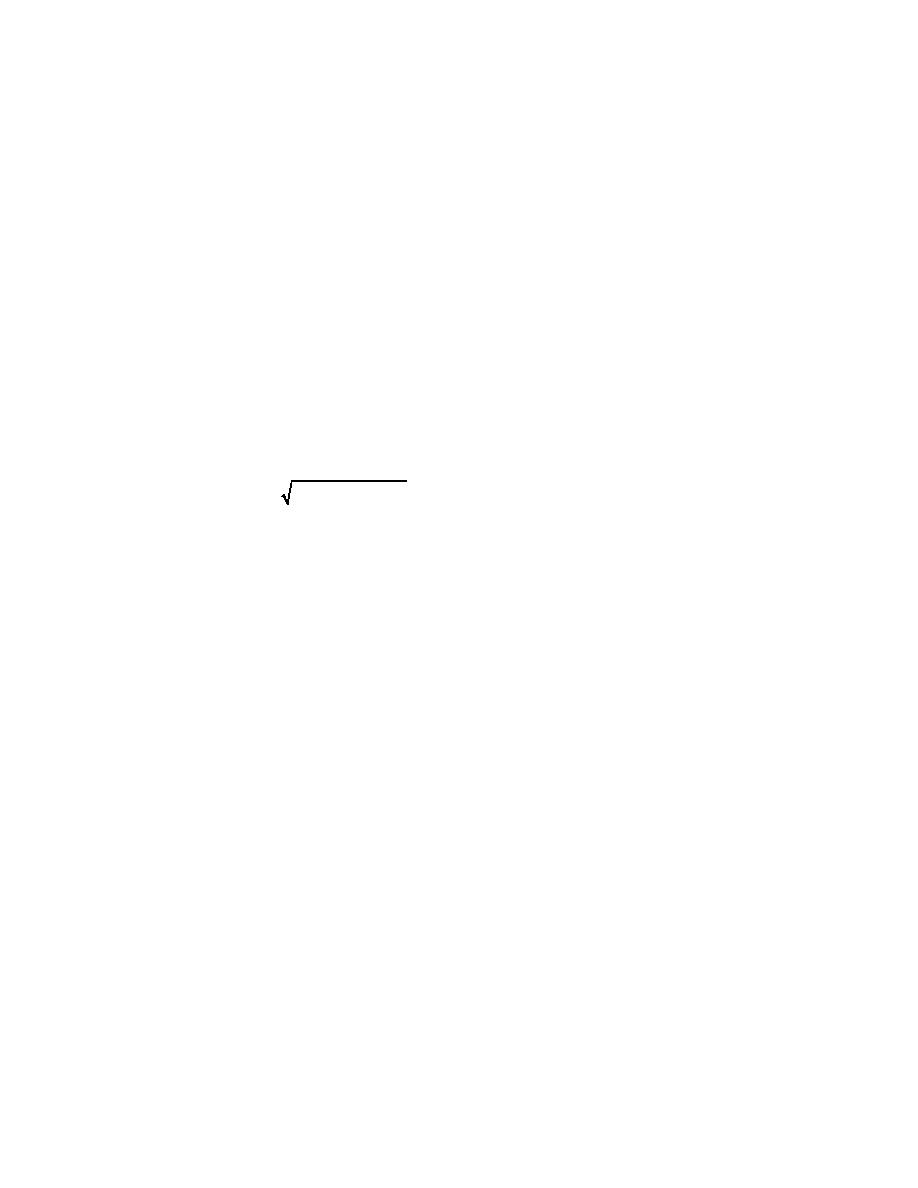
Given the same standard deviation, there is very little difference between the
shapes of different proposed forms of the directional spreading functions as
shown in Appendix C.
Time-histories of the velocity boundary conditions can be synthesized from
the directional wave spectrum using an extension of the linear superposition
technique used for irregular, unidirectional waves. The directional wave spec-
trum is initially divided into N frequency bands with uniform spacing, ∆ω, and M
direction bands with uniform spacing ∆θ. The water-surface elevation η(xr,t) can
be represented as a linear superposition of periodic wave components with differ-
ent amplitudes and frequencies, propagating in different directions, i.e.,
N
M
∑∑a
cos kij ⋅ x - ωit + εij
η( x, t ) =
(49)
ij
i=1 j=1
where kij = (kicosθj, kisinθj). The wave amplitudes, aij, are obtained determin-
istically from the directional wave spectrum as:
aij =
2Sη (ωi , θ j )∆ω∆θ
(50)
while the phase angles, εij, are randomly selected from a uniform distribution
between 0 and 2π. For a given time series duration, TD, and time-step, ∆t, the
values of N and ∆ω can be obtained in the same manner as for unidirectional
waves using Equations 38 and 39 respectively.
For finite duration time records, the double summation model (Equation 49)
produces a wave field that is spatially nonhomogenous. As pointed out by
Jeffreys (1987), this is because the phase difference between wave components
with identical frequencies but propagating in different directions is no longer
random but locked. An extreme example of this phenomenon is the standing
wave pattern that is produced when incident waves are fully reflected by a verti-
cal wall. The wave field consists of two waves with the same amplitude and
frequency propagating in opposite directions with a constant phase difference
between them. The wave heights vary from zero at the nodes to twice the inci-
dent wave height at the antinodes. This variability is obviously reduced by
including more frequency and direction components. However, as pointed by
Stansberg (1987) and others, the number of wave components required to reduce
the spatial variability in wave energy to within acceptable levels is quite large
[O(10,000)].
A different approach to producing a spatially homogenous multidirectional
wave field is to assume that each wave component has a unique direction of
propagation. Similar to an irregular unidirectional wave train, the water-surface
elevation is given by Equation 36 with kj = (kjcosθj, kjsinθj). Miles (1989)
discusses four different methods of assigning directions to each frequency
component. In BOUSS-2D, the random direction method was adapted in which
wave directions are selected at random from the cumulative distribution of the
directional spreading function. With this technique, the frequency spectrum is
matched exactly. However, the directional spreading function is matched only in
21
Chapter 3 Numerical Solution



 Previous Page
Previous Page
